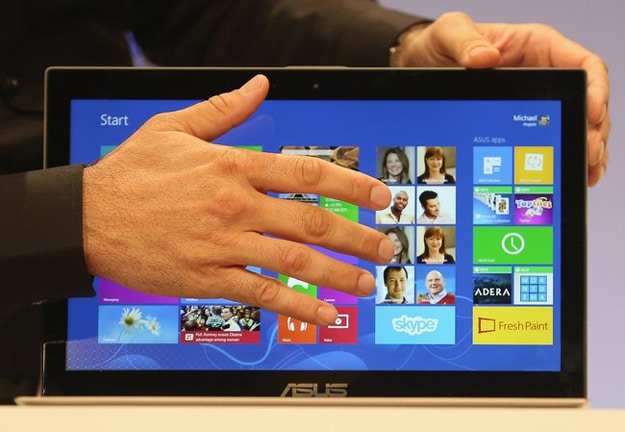Windows XP, the most successful consumer PC operating system by adoption in history, is still the second most widely used OS in the world, after Microsoft’s own Windows 7. The prevalence of both of these operating systems is testament to the power of the Windows desktop. The start menu, icons and taskbar have become so familiar and ingrained with the vast majority of computer users that they are doggedly sticking to it, no matter the cost in terms of inefficiency, security and clunky old hardware.
Users have grown comfortable with the Windows desktop, even with the windows 10 taskbar not working properly (but there is a fix for it), and they want it to stay the way it is. Take the confused reception that Windows 8 received. Many believe it is a “change too far,” with the new start screen and its touch-centric, tiled user interface which presents a jarring change from the past.
But get ready because this is just the beginning. We only have to go back in time to the launch of Windows XP to find a suitable comparison when Microsoft forced users to move on.
Forgive me if I don’t get the technical parts exactly right, but I think I can convey the gist of it. Up until the launch of Windows XP, MS-DOS ran on the majority of personal computers, either outright or with Windows running on top of it. With later Windows 9x operating systems such as Windows 95 and 98, you could boot the computer in MS-DOS and run it without Windows. Many users found this invaluable as it allowed much customization and application use without Windows running, and it was a familiar interface, particularly for power users. As an example, many games ran better from MS-DOS since it consumed less resources than Windows.
Then came Windows XP. Most of us don’t remember the uproar this new version of Windows caused upon release in 2001 given how fondly we treat it now. It was a big change compared to past releases. Leaving aside the malware that easily infected it, MS-DOS was gone, which meant everything had to be run through Windows, which in turn required more computing resources. It was also the first sole 32-bit Windows which meant it “broke” many applications, requiring users to either let them go or find alternatives. There was the whole “Fisher Price” look to the user interface which many switched off in favor of the classic Win 9x interface. And what about product activation? We do it without thinking now, but back then, it was a massive point of contention.
Adoption rates were slow for XP, and in fact, it wasn’t until the release of Service Pack 2 a few years later that Windows XP actually took off. SP2 by the way was a whole new operating system with the same user interface; Microsoft released it for free given the backlash it received about security holes in the original release, and that adoption wasn’t as extensive as hoped.
Flash forward to Windows 8. The Windows desktop has now been relegated to an “app” in the new start screen. It’s not hard to see a comparison to the treatment of MS-DOS where it was relegated to the background in Windows 95. Whether it’s the next version or the one after, the Windows desktop may be dropped altogether, forcing us all to use the touch-centric tile-based start screen and full screen apps. And people are already screaming about it. Get used to it. Microsoft has dropped old technologies before, and they’ll do it again. Of course, by the time the Windows desktop is fully dropped, all the PCs out there should have touch capabilities which should render the whole Windows 8 Start Screen thing more digestible.
Before you cry foul, just remember, Microsoft has been quite generous in supporting legacy systems. Windows XP is still being supported until April 2014! That’s more than 12 years since release! You wouldn’t have these complaints if you were an Apple user. Snow Leopard, which was released in 2006 is already out of date and doesn’t allow you to take full advantage of the features present in the current Mac ecosystem.
With Windows 8, the Desktop has officially become a legacy application. The Windows we have known for so long is gone. Given Microsoft’s penchant for supporting its large customer base, the Windows desktop will most likely still be here for the next version or two. After that, don’t be surprised if it disappears altogether.
Say Goodbye To The Windows Desktop
Image Credits: [MSDN Blogs] [Hatchrave]

COMMENTS